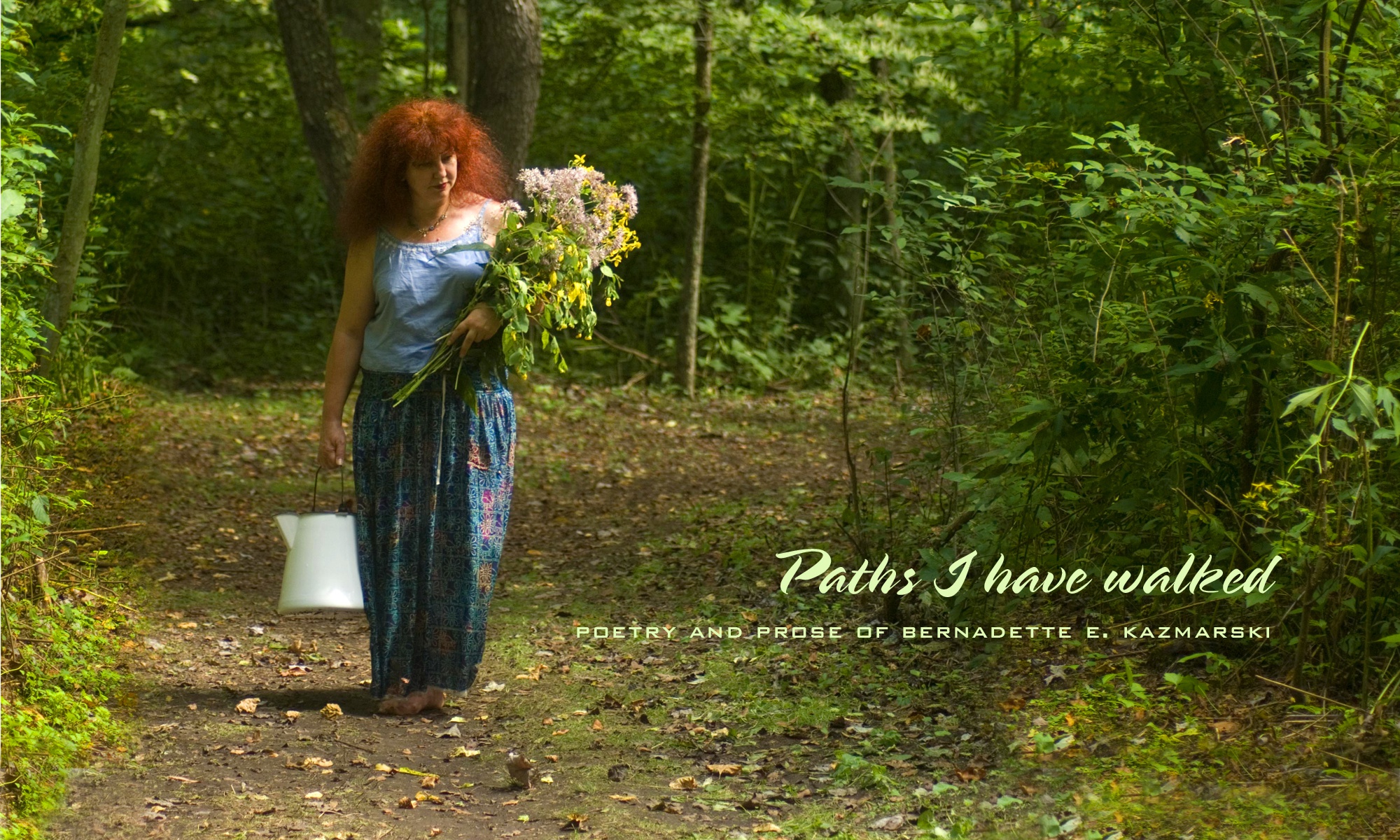
Green, green waves ahead
diminishing to blue over the northern horizon
exalted rises and shadowed valleys gradually made plain
to rolling hills and misted hollows
interstate unrolled as ribbon
around hill and following valley,
signs noting unseen destinations
bearing hopeful small town names:
“Freedom”
“Prosperity”
“Harmony”
little hamlets of Pennsylvania coal being crushed to diamonds,
glittering in the vales;
a gauze curtain of rain shower flows across hills
soaking opposite side of road
but the sun shines brightly ahead,
occasionally a sudden cluster of official orange obstructions
gives instructions to change directions
slowing pace to allow a close and careful study
of native plants along the roadside,
a stately brick farmhouse, a skull with empty windows, abandoned,
its outbuildings only roofs in the tall grass
as if melting back into the earth from whence they were created;
then a curving exit that leaves the noise of four lanes behind a rise,
a sojourn on a quiet two-lane three-digit backroad,
once the lifeline before the interstate, now empty;
clusters of buildings at intersections, one traffic light flashing yellow,
old farms and equipment,
rusted industrial structures,
a field gone entirely to Queen Anne’s Lace,
some cows on a hillside,
and everywhere roadside stands
celebrate the first flush of mid-summer bounty;
collect loose change from pockets and floor of car
and with the dole,
buy fresh homegrown sweet corn to feed thy soul.
Poem © 2006, B. E. Kazmarski
In December, 2006, two of my poems were chosen to be published on a section of the Prairie Home Companion website entitled “Stories From Home/First Person” for submissions of writing about the place we feel most familiar; this poem was one of those selected. I’m a long-time listener to PHC and reader of Garrison Keillor’s books as well as a daily listener to The Writer’s Almanac featuring news about writers and writing and of interest to writers as well as a poem, all compiled and read by Keillor himself. I was astonished to find my poems were among the first chosen from apparently thousands, and so happy to be able to share them with a potential audience of so many similarly inclined writers and readers. Every time I take that ride north on the interstate in the summer all the scenes and lines from the poem come back to me.
~~~
About the artwork
“Summer” is an abandoned farm field on a high ridge which I passed regularly on the way to work each morning for six years, seen right after an early morning storm. I would reach this portion of my drive and pause to look at this field with the morning unfolding above it, different each day, take a deep breath, and go on. The site was developed a few years later, but I still remember that each time I pass by it, even now. It’s one of a four-part commission I painted years ago featuring the four seasons in Western Pennsylvania. Read an essay about the painting, “Summer”, above, and purchase a digital, giclee or canvas print from my shop, Portraits of Animals.
Read more: Essays ♦ Short Stories ♦ Poetry
![]() All Rights Reserved. ♦ © Bernadette E. Kazmarski ♦ PathsIHaveWalked.com
All Rights Reserved. ♦ © Bernadette E. Kazmarski ♦ PathsIHaveWalked.com
•
SUPPORT MY WRITING






























